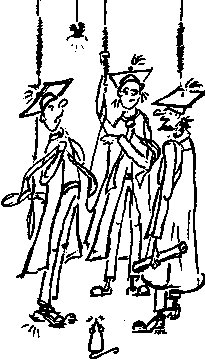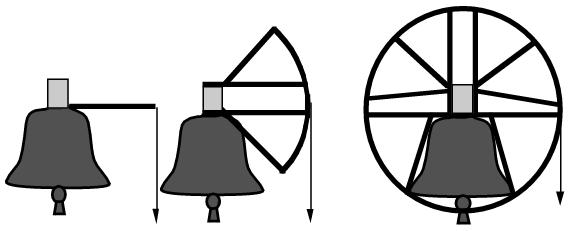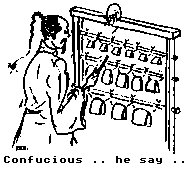The Tower Handbook
4.1: Ringing history
a: What is the oldest ring of bells?
The ring of five at St Lawrence, Ipswich are all mediaeval bells, but from several foundries. The six at Martley, Worcestershire, were cast by Richard Keene of Woodstock in 1673 making them the oldest complete ring of bells. Horham, Suffolk has the oldest complete eight. The tenor dates from 1568. The treble was added to complete the octave in 1673. Complete rings from the 18th century are fairly common eg the ten at Wrexham, all cast in 1726-8.
b: What is the oldest bell foundry?i.Oldest:Foundry;
Mediaeval bell founding was carried out mostly by itinerant craftsmen who had no permanent foundry location. The Whitechapel Bell Foundry is recorded at or near its current site in 1574 where Robert Mot operated until 1606, but there is traceable evidence of predecessors as early as 1420. This makes Whitechapel the oldest bell foundry in the world, and also the oldest company of any sort in the UK.
c: What is the oldest ringing society?i.Oldest:Ringing society;
The Ancient Society of College Youths (ASCY) founded in 1637 is the oldest existing society devoted to ringing. The Society of St Stephen's Ringers in Bristol is older, but although founded as a ringing society, its members have not been ringers for a century so it does not really count. Most early societies were purely local, often just the ringers at one or two churches. Many were short-lived as the fortunes of bands waxed and waned. The long-established societies such as the ASCY and the Society of Royal Cumberland Youths (SRCY) also experienced varying fortunes. They changed their names and sometimes split into rival factions.
d: What was belfry reform?
In the 18th and early 19th centuries ringing was rarely a church activity and many ringers were unruly. The Church grudgingly tolerated their use of church bells. In the late 19th century, the Oxford Movement in the Church of England inspired clergy to reform the ways of ringers and bring them more actively into the church. Most diocesan and county societies [13] were founded around then, often by clergymen.
e: Why are our ringing chambers where they are?
Many are constrained by the architecture. The tower may be too short for an upstairs room or so tall that a ground floor room would involve an excessively long rope draught. Central towers normally have to be upstairs, though in some the ropes hang down between the pews. But many ringing rooms have been moved up or down the tower, or both, over the centuries. When ringers were thought unsuitable people to be in church, they were moved upstairs out of sight wherever possible. Later the belfry reform movement often brought them down to the ground floor, so the ringers' behaviour could be observed.
f: What is the oldest university ringing society?i.Oldest:University ringing society;
 The Oxford University Society. It was founded on 2nd February 1872. This was seven years before the Cambridge University Guild which was founded in 1879. However, the CUG has been continuously active since that date, whereas there were a number of years during which the OUS, although in existence, was not active.
The Oxford University Society. It was founded on 2nd February 1872. This was seven years before the Cambridge University Guild which was founded in 1879. However, the CUG has been continuously active since that date, whereas there were a number of years during which the OUS, although in existence, was not active.
Members of both societies, many of whom were clerics, played leading roles in the formation of many of our diocesan and county ringing guilds and associations during the decades which followed.
g: What is the Central Council?
The Central Council of Church Bellringers is an international body [14]. Most major ringing bodies are affiliated to it. It sits at the apex of a pyramid ofA
- over 70 guilds and associations,
- a couple of hundred branches or districts,
- 5400+ towers,
- 40,000+ ringers.
The Council provides a forum for debate, standardisation and action in ringing matters, especially those affecting the Exercise as a whole. Most of its work is undertaken by fifteen committees:
- Administrative,
- Bell Restoration Funds,
- Biographies,
- Computer Co-ordination,
- Education,
- Library,
- Methods,
- Peal Compositions,
- Peals Analysis,
- Public Relations,
- Publications,
- Records,
- Redundant Bells,
- Ringing Centres,
- Towers and Belfries.
The Ringing World Ltd is owned by the Council. See section 4.1i below.
h: What is the origin of the Central Council:Formation?
A well-known ringer from Derbyshire, Sir Arthur Percival Heywood, invited a number of prominent ringers from all over the country to attend a dinner at Birmingham in 1890, and suggested to them that a national organisation of ringers would be a useful body. The first meeting of the Central Council of Church Bell Ringers took place in London the following year, and elected Heywood as its first president.
i: What was the first periodical devoted to ringing?i.First:Ringing periodical;
Ringers have always been keen to pass on and receive news of performances and developments in method ringing. From 1676 methods were recorded in books, with news passed by word of mouth or in newspapers. Bell's Life, an early 19th century sporting newspaper sometimes included items on ringing, and from 1870 there was a 'Bells and Bellringing' column in Church Bells. In spite of its name this covered a wide range of news and current affairs.
In February 1881 Bell News and Ringers' Record became the first journal devoted entirely to ringing. It appeared monthly for 15 issues and then weekly for 33 years. It was joined for 26 weekly issues in 1896-7 by Campanology, and nine issues of The Bellringer in 1907. Bell News only lasted a few years after 1911 when John Sparkes Goldsmith founded The Ringing World. He remained its proprietor until his death in 1942. It was then run by The Ringing World Committee of the Central Council until 1983 when the Council set up The Ringing World Ltd as a Company.

The Ringing World logo shows the silhouettes of famous London churches
j: What is the origin of bells?
The earliest bells (or bell precursors) were natural objects like shells and gourds (we would have called them rattles). Larger ones made of hardwood tree trunks, were hollowed out and struck with mallets. The Chinese produced porcelain bells from the 7th to the 10th century. Metal bells became possible when the metal working (in gold, silver, tin and bronze) advanced sufficiently to make them. The first metal bells were imitations of the natural objects like gourds that preceded them. This produced the crotal, a roughly spherical bell with a slot in the end. Crotals are still used, for example attached to pet collars. They were the bells referred to in Exodus 39 v 25 which says the high priest's robe should be decorated 'with bells and pomegranates'.
k: Have metal bells always been the same?
The earliest metal bells were Chinese, dating back several thousand years. Many were oblong, oval or square, rather than circular in section. Bells appeared much later in Europe. The Latin word for bell (campanum) only dates from the 5th century. Early Celtic bells in Britain often consisted of iron plates, riveted together and dipped in molten copper to seal the gaps. Bell founding in Britain goes back to at least the 11th century. Many of the techniques used in the early years would be recognised today. The main difference was the use of a 'lost wax' process. A wax bell was built on the loam core and the outer mould then built on this. The wax was melted and drained out leaving a cavity into which the bell metal was poured.
Cast bells vary in shape somewhat, with mediaeval bells being generally longer than modern bells. Individual founders' bells can also often be identified by subtle differences in their shape. The detailed shape varies significantly between different founders and over the years, and especially the thickness in different parts of the bell, but these are often not visible on casual observation. Overall, the considerable similarity reflects the fact that they are all designed to do the same job, see section 5.7b.
One conspicuous exception to this is the 'major third bell' (ie one with a major third partial tone instead of minor). They are not common and opinions differ about the sound. They have a distinctive thickening above the sound bow.
l: Why has the number of bell founders reduced?
A combination of the development of modern transport and the economies of scale that affect even traditional industries like bell founding.
In the early centuries, with poor transport, a founder could only serve a small area, so there were more of them. In mediaeval times, the major centres of bell founding were in London, York, Gloucester and Nottingham, but as bellfounding grew they became far more widespread. There were also many itinerant bell founders. By setting up a temporary foundry in the church yard where the bells were to be hung they avoided the problem of transporting bells. They would need to bring in some raw materials but would have used local resources as far as possible.
As transport improved itinerant founding disappeared since it is more cost effective to reuse fixed plant and equipment than to keep building new or improvising. In modern times, transport over long distances has become cheaper allowing a few founders to serve larger areas and operate on a more economic scale. The number of founders continued to reduce and there are now only two in Britain. It is common for bells to be exported between countries (from Britain to the rest of the world and from The Netherlands to Britain).
m: When was the bell-wheel invented?
Invented is not really the appropriate word, since the bell-wheel evolved over a fairly long period. When bells were first hung for chiming, the swinging movement needed to make the clapper strike the bell was achieved by means of a rope attached to a lever on the headstock. Some small bells are still chimed in this way. If the bell is swung through more than a very small angle, the rope gets pulled away from the vertical, causing friction and wear. The solution was to fix a segment of wheel (probably about a quarter) to the headstock instead of the lever. This probably encouraged swinging the bell through a larger angle. Even larger swings could be accommodated by increasing the arc of the wheel. Ancient half wheels have been discovered in out-of-the-way belfries.

The evolution of the bell wheel
By the sixteenth century, half wheels were evolving into three-quarter wheels that enabled bells to be swung more than half way up if the rope was fastened to the top of the wheel (above the headstock). The next development was probably fitting an extra spoke with a notch in the end to guide the rope in the area where there was no rim to the wheel, followed by the completion of the rim sometime during the seventeenth century. This enabled the bell to be rung full circle. By the mid nineteenth century, wheel patterns had become fairly standard with the spoke arrangement we know today.
n: When was the handstroke invented?
The handstroke became necessary to control the bell once it was rung full circle. If it was swinging near the balance in both directions the rope needed to be able to pull it back. To make the rope bounce and give what we now know as the handstroke, the point of attachment of the rope to the rim of the wheel had to be moved to its modern 'two o'clock' position.
This was initially achieved by tying a piece of rope (a garter, or in Devon called a fillet) around the rim of the wheel at the required position. This, combined with a ground pulley on or near the floor of the bell chamber, caused the change of direction of the rope as the garter passed the pulley. Later the rope was taken through a hole in the rim of the wheel and tied to the spokes. This hole replaced the garter (or fillet), and was therefore called the garter (or fillet) hole. In Devon, the handstroke is still sometimes called the fillet-stroke.
o: What were plain changes?
Plain changes developed in the seventeenth century and gradually evolved into method ringing as we know it. Only one pair of bells changes place at once, unlike modern change ringing where most bells change most of the time.
One of the simplest schemes was the 'twenty all over'. This involved each bell in turn hunting from the front to the back while the others did not move except to get out of the way of the hunting bell when it passed them. Other schemes were more complex and could produce an extent. For example there were rules such as 'when the hunt bell is at the back or front, the half hunt bell moves one place'. The half hunt bell is usually the bell left at the front when the treble begins to hunt, and is progressively moved to the back and down again. This can be varied further by swapping the pair of other (known as extreme) bells furthest from the hunt bell whenever the hunt bell and half hunt bell are both at the end (front or back). This is quite demanding to call as call changes.
 Double Court Minimus is one of the few modern methods that is an example of plain changes. The court places can only be made in 2nds and 3rds [15] and this prevents dodging on the front and back. Making six consecutive blows in the same place is contrary to the spirit of modern method ringing.
Double Court Minimus is one of the few modern methods that is an example of plain changes. The court places can only be made in 2nds and 3rds [15] and this prevents dodging on the front and back. Making six consecutive blows in the same place is contrary to the spirit of modern method ringing.
Opinions differ about whether method ringing as we know it evolved because it was easier than plain changes, or just because it was more interesting with all bells moving. Modern method ringers may find plain changes difficult.
p: When was method splicing invented?
In the late nineteenth century, advanced Minor bands began to ring peals in more than seven methods. They rang each method for a shorter touch than a 720(360s for fourteen methods or 240s for twenty one methods, or a mixture). This meant that rounds occurred more than seven times, and some rows may not have been rung at all. There was much debate about whether these peals were acceptable, but they continued until Rev H Law James pointed out that many Minor methods had structures that enabled true extents to be composed by using more than one method. The first peal of Spliced Minor was rung in 1911. Since then, it has come to light that a method known as Crown Bob Minor rung in Yorkshire in the early nineteenth century was in fact a touch of spliced.
q: When was the first peal rung?
 A peal of Plain Bob Triples rung at Norwich in 1715 is generally accepted as being the first peal, although there is some inconclusive evidence that a 5040 of Plain Bob Triples with non-standard calls might have been rung at St Sepulchre's Holborn on 7th January 1690. The dates of first peals in most methods can be found after the compositions section of The Ringing World Diary.
A peal of Plain Bob Triples rung at Norwich in 1715 is generally accepted as being the first peal, although there is some inconclusive evidence that a 5040 of Plain Bob Triples with non-standard calls might have been rung at St Sepulchre's Holborn on 7th January 1690. The dates of first peals in most methods can be found after the compositions section of The Ringing World Diary.
The Chinese had bells but they didn't ring the first peal?
Previous

 Next
Next
Currently hosted on jaharrison.me.uk
 The Oxford University Society. It was founded on 2nd February 1872. This was seven years before the Cambridge University Guild which was founded in 1879. However, the CUG has been continuously active since that date, whereas there were a number of years during which the OUS, although in existence, was not active.
The Oxford University Society. It was founded on 2nd February 1872. This was seven years before the Cambridge University Guild which was founded in 1879. However, the CUG has been continuously active since that date, whereas there were a number of years during which the OUS, although in existence, was not active.

 Double Court Minimus is one of the few modern methods that is an example of plain changes. The court places can only be made in 2nds and 3rds
Double Court Minimus is one of the few modern methods that is an example of plain changes. The court places can only be made in 2nds and 3rds  A peal of Plain Bob Triples rung at Norwich in 1715 is generally accepted as being the first peal, although there is some inconclusive evidence that a 5040 of Plain Bob Triples with non-standard calls might have been rung at St Sepulchre's Holborn on 7th January 1690. The dates of first peals in most methods can be found after the compositions section of The Ringing World Diary.
A peal of Plain Bob Triples rung at Norwich in 1715 is generally accepted as being the first peal, although there is some inconclusive evidence that a 5040 of Plain Bob Triples with non-standard calls might have been rung at St Sepulchre's Holborn on 7th January 1690. The dates of first peals in most methods can be found after the compositions section of The Ringing World Diary.